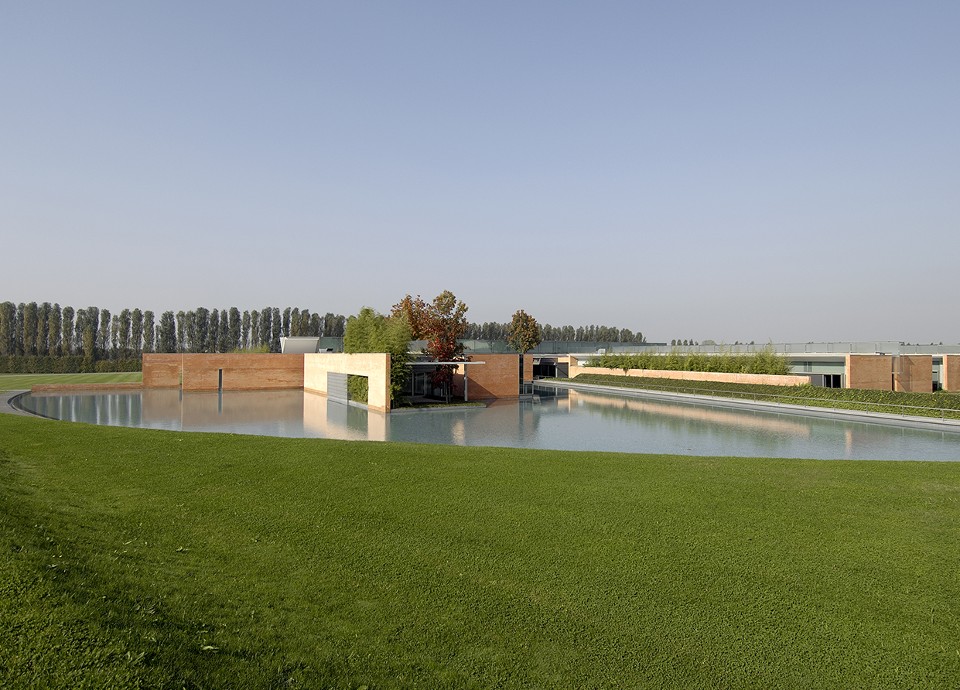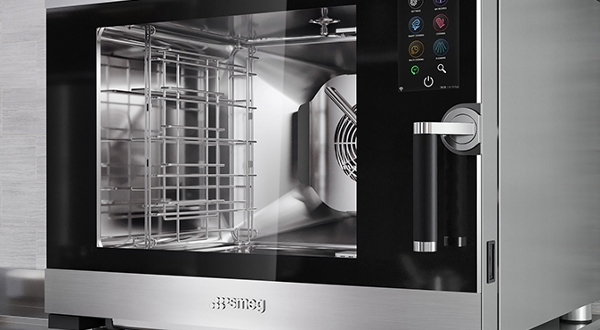Aware of the importance of respecting its consumers , and committed to achieving sustainable development, for many years Smeg has pursued policies geared toward continuously improving values linked to environmental sustainability.

Environmental sustainability
Headquarters
The company headquarters were designed by architect Guido Canali, whose efforts were recognised in 2006 with the Honourable Mention of the “Gold Medal for Italian Architecture” awarded by the Triennale of Milan. The 13th International Architecture Exhibition of the Biennale of Venice in 2012 presented this project in the Italian pavilion as an architectural example of Made in Italy excellence for a construction attentive to the poetics of the territory, the life of people, and environmental sustainability.



Smeg in turn received the Domotics Award in 2007 for its headquarters declared to be the most innovative in Italy for its smart power management and example of sustainable development, and the Dedalo Minosse International Prize for commissioning a building in 2008.
The Smeg headquarters reinterprets the traditional rural courts of the lower Po, proof of its commitment to respecting the local territory.
Declared one of Italy's most innovative buildings for its smart power management andexample of sustainable development , it is shrouded in an aura of precision, harmonised by green areas and ponds, designed to ensure maximum liveability.
In addition to the office blocks, even the production facilities have been designed according to an integrated system that maximises costs and resources, featuring the most modern building automation technology, security systems, and highly efficient distribution and handling systems.

Responsible design
Smeg designs its electrical appliances - ovens, hobs, coffee machines, kitchen units, dishwashers, washing machines, dryers, air extraction hoods, sinks, fridges and freezers - reserving special attention to the integration of environmental protection requirements.
The highest attention is afforded to the use of materials such as steel, glass, aluminium and brass, which can be easily recycled through careful waste sorting.
To improve theecological footprint of its products, in addition to strictly observing the indications of European Directives RoHs and REACH, keeping well below the minimum legal values, Smeg has adopted an internal regulation that further extends restrictions on the use of substances considered potentially hazardous.
RoHS (Restriction of Hazardous Substances)
The RoHSdirective provides for strict restrictions on the use of hazardous materials and substances such as lead, cadmium, mercury, hexavalent chromium VI, polybrominated biphenyls (PBBs) and polybrominated diphenyl ethers (PBDEs).
REACH (Registration, Evaluation, Authorisation and Restriction of Chemicals)
REACH is a system governing the management of chemical substances, the regulation of which is intended to ensure a high level of protection of human health and the environment.

Sustainable production
The entire Smeg supply chain complies with sustainability criteria, starting from the selection of suppliers with eco-friendly protocols, in possession of environmental and safety certification, and which make the most possible use ofrecyclable packaging, all the way through to the choice – where possible – of transportation means other than road freight.
The Company, forever endowed with a strong sense of ecological awareness, in the last 10 years has achieved an almost 30% reduction in airborne and aquatic pollutant emissions, and an impressive 40% reduction in water consumption in relation to production, as well a reduction in the use of materials, especially packaging.
Smeg has also demonstrated an unwavering commitment through its far-sighted waste management policy: waste production has been reduced in terms of both quantity and harmfulness, and sorting of leftover materials for reuse and recycling has increased by 20%.
For Smeg, Ecology means not only producing electrical appliances with a low environmental impact, but also adopting a production process that reflects, or even better, exceeds existing environmental protection laws: an industrial process no doubt more burdensome, but nowadays an irrefutable priority.
ECO-FRIENDLY PRODUCTS
Smeg FoodService professional appliances combine best performance with low consumption, focusing in particular on maximum energy efficiency to ensure absolute respect for our environment and an improved quality of life.
© 2023 SMEG S.p.A. VAT 01555030350
Smeg S.p.A. - Via Leonardo da Vinci, 4 - 42016 Guastalla (RE) Italy
Phone +39 0522 821 1 - Fax +39 0522 821453 - Email [email protected]
 SOUTH AFRICA
SOUTH AFRICA
 International
International Australia
Australia France
France Germany
Germany Italy
Italy Netherland
Netherland Poland
Poland Portugal
Portugal Russia
Russia Sweden
Sweden Spain
Spain United Kingdom
United Kingdom
 Galileo Professional Oven
Galileo Professional Oven
 Washing
Washing
 Cooking
Cooking
 Austria
Austria

